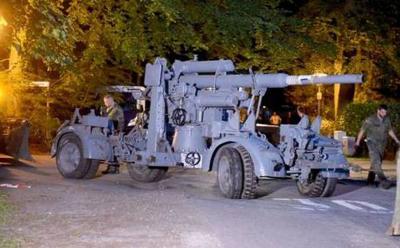Visakhapatnam :
Heritage lovers want the two World War II bunkers to be placed in Visakha Museum or along Beach Road for tourists and public to learn about their history and importance associated with Vizag. Currently, one of the bunkers lies partially submerged in the sea sand near RK Beach, while the other is in the One Town Area near the port conveyer belt. There’s also a huge concrete bunker on the beach in Jalaripeta region near Kailasagiri, which is practically not feasible to be shifted given its size and mass.
During low tides or beach erosion, the bunkers at times get exposed though most people are unaware of its significance. As per historians, there might be more such historical bunkers between Old Town and Jalaripeta along the beach but not all of them are visible and might be under water. Changes in the coastal landscape may cause some of them to surface in future. The bunkers were constructed for attacking or firing at enemy ships that try to enter the shores.
S Ravi Kanth Reddy, founder-president of Meecons, said, “Recently, I wrote to GVMC commissioner Pravin Kumar requesting him to salvage those two bunkers and make them part of a local museum or at least put them for public display somewhere on Beach oad with some description about their historical significance.”
Elaborating on the bunkers and Vizag’s tryst with the World War II, Captain Dorai Babu of the Indian Navy, who has done research and contributed to certain publications related to the East Coast Naval History during the International Fleet Review (IFR), said, “Not many people are aware that during World War II, a Japanese submarine was sunk around 20 miles off Vizag by an Australian ship. A Japanese aircraft tried to bomb Vizag Port area. The British were anticipating an attack on Vizag and therefore bunkers were built along the coast in the late 1930s and ’40s as a protective and attacking measure.”
“The bunkers are usually 4-5 feet under the ground and 3-4 feet above the ground. They are fortified with stone and can prevent 20 mm bullet attacks to protect guns and crew housed in them,” added Captain Babu.
Historian Edward Paul averred, “These bunkers or pill boxes were used to attack enemy ships trying to enter Vizag shores. The crew would be hidden in the bunkers from where they would shoot. Holes were made on the bunkers for bullets to be fired from them. The bunkers were made of thick solid concrete, which could resist firing attacks. However, these are so heavy and huge that extracting them from the seashores and bringing them to museums or Beach Road would be practically a herculean task requiring modern technology. May be some boards about their utility and historical significance can be placed along the Beach Road. But with increased erosion and the sea encroaching the shores, slowly the bunkers are becoming invisible. In the 1960s, when the sea hadn’t advanced so much, the bunkers would be clearly visible.”
Curator of Visakha Heritage Museum MNA Patrudu said, “It would be definitely a wonderful idea to place the bunkers along with information boards for tourists. May be the museum too can find some space for it if it can be lifted from the seashore. These are very heavy and half of them are submerged in the waters. Lifting and placing them somewhere else would be an extremely difficult task.”
source: http://www.timesofindia.indiatimes.com / The Times of India / News Home> City> Visakhapatnam / Sulogna Mehta / TNN / July 23rd, 2016
